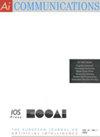联网和自动驾驶汽车安全变道的多智能体强化学习:一项调查
IF 1.4
4区 计算机科学
Q4 COMPUTER SCIENCE, ARTIFICIAL INTELLIGENCE
引用次数: 0
摘要
互联自动驾驶汽车(CAV)有望通过自动化驾驶任务来提高交通的安全性和效率。其中,变道尤其具有挑战性,因为它要求车辆了解其高度动态的周围环境,做出决策,并在很短的时间内实施。由于CAV需要根据从环境中收集的大量数据来优化其动作,强化学习(RL)已被广泛用于开发CAV运动控制器。这些控制器学习使用车载传感器和车内通信做出高效、安全的变道决策。本文首先介绍了未来安全自动驾驶汽车的四个关键领域:CAV、运动控制、RL和安全控制。然后,它定义了安全CAV控制器的要求。这些首先用于比较多智能体强化学习(MARL)在CAV变道控制器中的应用。然后使用这些要求来评估用于基于RL的运动控制器的最先进的安全方法。最后一节总结了研究空白和未来开发基于MARL的CAV运动控制器的可能机会。特别是,它强调了设计具有连续控制变道的MARL控制器的要求。此外,由于RL算法本身并不能保证此类安全关键应用所需的安全水平,因此将安全RL方法与基于MARL的CAV运动控制器相结合提供了见解和挑战。本文章由计算机程序翻译,如有差异,请以英文原文为准。
Multi-agent reinforcement learning for safe lane changes by connected and autonomous vehicles: A survey
Connected Autonomous vehicles (CAVs) are expected to improve the safety and efficiency of traffic by automating driving tasks. Amongst those, lane changing is particularly challenging, as it requires the vehicle to be aware of its highly-dynamic surrounding environment, make decisions, and enact them within very short time windows. As CAVs need to optimise their actions based on a large set of data collected from the environment, Reinforcement Learning (RL) has been widely used to develop CAV motion controllers. These controllers learn to make efficient and safe lane changing decisions using on-board sensors and inter-vehicle communication. This paper, first presents four overlapping fields that are key to the future of safe self-driving cars: CAVs, motion control, RL, and safe control. It then defines the requirements for a safe CAV controller. These are used firstly to compare applications of Multi-Agent Reinforcement Learning (MARL) to CAV lane change controllers. The requirements are then used to evaluate state-of-the-art safety methods used for RL-based motion controllers. The final section summarises research gaps and possible opportunities for the future development of safe MARL-based CAV motion controllers. In particular, it highlights the requirement to design MARL controllers with continuous control for lane changing. Moreover, as RL algorithms by themselves do not guarantee the level of safety required for such safety-critical applications, it offers insights and challenges to integrate safe RL methods with MARL-based CAV motion controllers.
求助全文
通过发布文献求助,成功后即可免费获取论文全文。
去求助
来源期刊

AI Communications
工程技术-计算机:人工智能
CiteScore
2.30
自引率
12.50%
发文量
34
审稿时长
4.5 months
期刊介绍:
AI Communications is a journal on artificial intelligence (AI) which has a close relationship to EurAI (European Association for Artificial Intelligence, formerly ECCAI). It covers the whole AI community: Scientific institutions as well as commercial and industrial companies.
AI Communications aims to enhance contacts and information exchange between AI researchers and developers, and to provide supranational information to those concerned with AI and advanced information processing. AI Communications publishes refereed articles concerning scientific and technical AI procedures, provided they are of sufficient interest to a large readership of both scientific and practical background. In addition it contains high-level background material, both at the technical level as well as the level of opinions, policies and news.
 求助内容:
求助内容: 应助结果提醒方式:
应助结果提醒方式:


